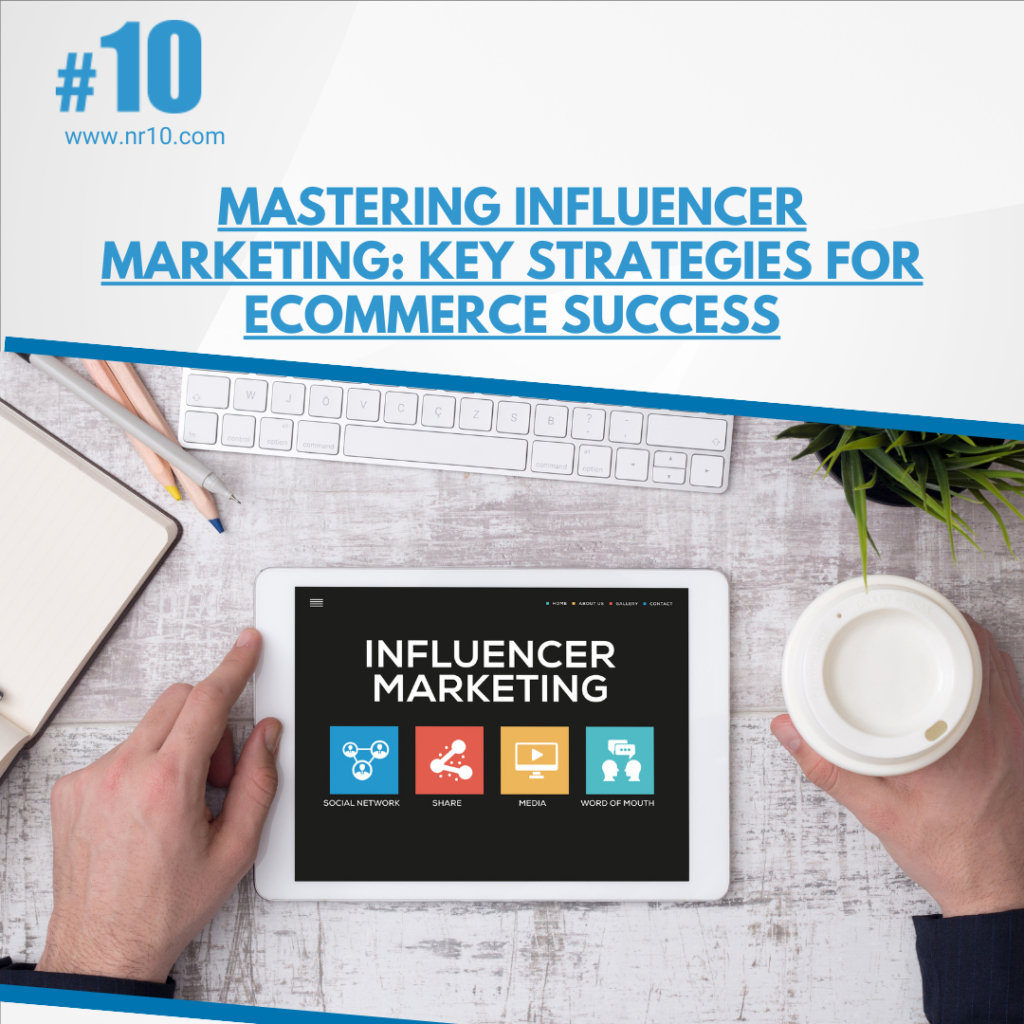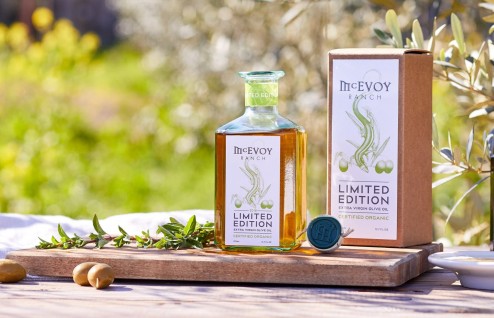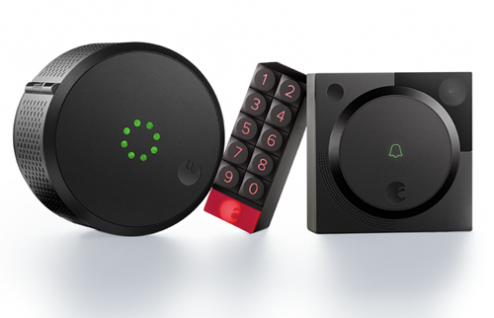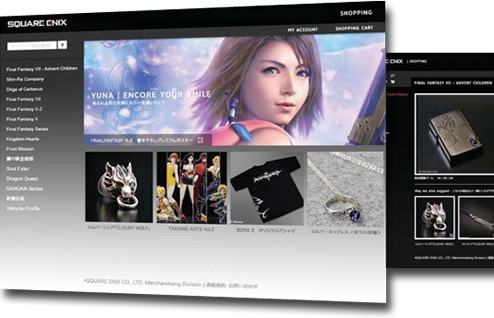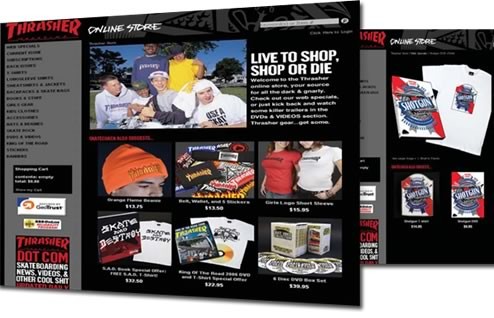Mastering Influencer Marketing: Key Strategies for eCommerce Success
Q1: What is influencer marketing and how can it benefit my eCommerce business?
Q2: How do I select the right influencers for my brand and products?
Q3: What are the best practices for reaching out to influencers?
Q4: How can I measure the ROI of influencer marketing campaigns?
Q5: How can I integrate influencer marketing with other marketing strategies for my online store?
Q6: How do I ensure authenticity in influencer partnerships?
Q7: What are some common mistakes brands make in influencer marketing?
Q8: How can I leverage micro-influencers effectively for my eCommerce brand?
Q9: What are the emerging trends in influencer marketing for eCommerce?
Q10: How do I negotiate with influencers and structure a fair compensation?
What is influencer marketing and how can it benefit my eCommerce business?
Influencer marketing is a digital strategy where brands collaborate with individuals who have a strong and engaged online presence or “influence” in their niche. It’s an evolution of traditional word-of-mouth marketing, adapted for the social media age.
- Reaching Target Audience – Working with influencers allows brands to tap into pre-existing communities, directly reaching their target audience.
- Credibility and Trust – Influencers have already built trust with their followers. A recommendation from them acts as a seal of approval.
- Content Creation – Influencers are skilled content creators. Collaborations often result in high-quality content that brands can use across their platforms.
- Higher Engagement – Influencer posts often receive higher engagement than regular ads due to their organic and genuine nature.
- Boosting Sales – A direct recommendation from a trusted source can drive sales effectively. Moreover, many influencers provide unique discount codes to track sales and incentivize their followers.
- SEO Benefits – Collaborations can lead to backlinks from influential sites and social signals, which can potentially boost your website’s SEO.
- Ad Blocker Avoidance – With many consumers using ad blockers, influencer posts can be an effective way to bypass this issue.
- Increased Brand Awareness – Even if followers don’t purchase immediately, they become aware of the brand, which can lead to future conversions.
- Feedback Loop – Collaborating with influencers can also offer a unique opportunity to get feedback on products or services.
- Budget-Friendly Options – While top-tier influencers can be expensive, micro-influencers offer budget-friendly options with equally engaged followers.
One factor making influencer marketing even more powerful for eCommerce is the integration of highly profitable eCommerce website characteristics. When both strategies are combined, it can lead to an explosive growth in sales and brand recognition.
How do I select the right influencers for my brand and products?
Choosing the right influencer is crucial to the success of any influencer marketing campaign. Here’s a systematic approach to aid in this process:
- Understand Your Audience: Before you start searching for influencers, define your target audience. Who are they? What do they like? Which influencers do they follow?
- Niche Relevance: The influencer’s niche should align with your product or service. A beauty influencer might not be the best fit for a tech product.
- Engagement Rate: More followers don’t always mean better results. Check how actively the influencer’s audience interacts with their posts.
- Quality of Content: Review the influencer’s past content. Is it of high quality? Is it consistent with your brand image?
- Values and Authenticity: Ensure the influencer’s values align with your brand. Authenticity is key in influencer marketing.
- Check Past Collaborations: Has the influencer previously worked with your competitors? How did those campaigns perform?
- Audience Demographics: Use analytics tools to get a demographic breakdown of the influencer’s followers. Ensure it matches with your target audience.
- Budget: Top-tier influencers can be expensive. Decide on a budget before reaching out.
- Terms of Collaboration: Some influencers might only agree to non-paid collaborations (like product gifting), while others might demand a fee.
- Feedback and Reviews: Check reviews from other brands who’ve worked with the influencer. It’ll give insights about their professionalism and results.
Remember, the key is to find influencers who resonate with your brand values and have an audience that matches your target demographic. Also, a partnership should benefit both parties. While you aim to boost your sales and visibility, influencers aim to deliver value to their followers and earn from their influence.
What are the best practices for reaching out to influencers?
When you’ve identified potential influencers, the next step is reaching out to them. Here’s how to do it effectively:
- Personalized Outreach: Avoid generic messages. Reference their past work, and explain why they’re a fit for your brand.
- Clear Objectives: Clearly define what you aim to achieve with the collaboration, be it brand awareness, product launches, or sales.
- Offer Value: Besides monetary compensation, think about how the collaboration can benefit the influencer. Can it offer them exposure, unique content, or a long-term partnership?
- Transparency: Be open about your expectations, deliverables, and compensation.
- Flexible Approach: While it’s good to have a clear plan, be ready to accommodate the influencer’s creative inputs.
- Use Proper Channels: While some influencers prefer being reached out on social media, others might have a professional email or a manager for collaborations.
- Follow Up: If you don’t receive a response, it’s okay to send a follow-up email or message. However, avoid being too pushy.
- Draft a Contract: Once you both agree, it’s wise to have a written agreement highlighting deliverables, compensation, and other terms.
- Open Communication: Maintain an open line of communication throughout the collaboration. Encourage influencers to ask questions or share concerns.
- Feedback Loop: After the campaign, discuss the results, what worked, and areas of improvement.
Reaching out to influencers is similar to building any professional relationship. It’s a two-way street. Offering value, maintaining transparency, and fostering mutual respect are keys to a successful partnership.
How can I measure the ROI of influencer marketing campaigns?
Measuring the return on investment (ROI) is crucial to understand the effectiveness of your influencer campaigns. Here’s how to gauge the success:
- Set Clear KPIs: Before starting the campaign, define what you consider success. It could be an increase in sales, followers, website visits, or engagement.
- Use Trackable Links: Provide influencers with unique tracking links to measure the traffic and conversions they generate.
- Engagement Metrics: Monitor likes, shares, comments, and overall engagement of the influencer’s posts.
- Conversion Rate: Track how many of the redirected users made a purchase or performed a desired action.
- Audience Growth: Check if the campaign has led to an increase in your brand’s followers or subscribers.
- Customer Feedback: Monitor customer feedback and mentions to gauge their sentiments after the campaign.
- Cost Per Acquisition (CPA): Calculate how much it cost to acquire each customer through the campaign.
- Sales Data: Directly measure the increase in sales during and after the influencer’s promotion.
- Lifetime Value of Customers: Determine the long-term value of customers acquired through the campaign.
- Feedback from Influencer: Get feedback from the influencer about their perspective on the campaign’s success and areas of improvement.
By understanding the ROI, you can refine your influencer marketing strategy, allocating resources more efficiently in future campaigns.
How can I integrate influencer marketing with other marketing strategies for my online store?
Influencer marketing doesn’t have to stand alone. It can, and often should, be integrated with other marketing efforts for maximum impact. Here’s how:
- Content Marketing: Collaborate with influencers to create content for your blog, YouTube channel, or podcast. This not only brings their audience to your platforms but also enriches your content library.
- Social Media Marketing: Share the content created by influencers on your brand’s social media profiles. This gives your brand more credibility and authenticity.
- Email Marketing: Feature influencer testimonials, reviews, or content in your email newsletters.
- Affiliate Marketing: Combine influencer marketing with affiliate strategies. Offer influencers a commission for every sale made through their referral.
- SEO: The high-quality content generated by influencers can be used to enhance your website’s SEO. Also, backlinks from influencer blogs can boost your website’s domain authority.
- PPC Campaigns: Use influencer testimonials or reviews in your ad creatives to enhance credibility.
- Loyalty Programs: Collaborate with influencers to promote your brand’s loyalty program or to offer special deals to their followers.
- Web Design and UX: Feature influencer reviews or unboxing videos on your product pages. This can enhance trust and boost the profitability of your eCommerce website.
- Events and Webinars: Involve influencers in your brand events, product launches, or webinars. Their presence can attract a larger audience.
- Product Development: Involve influencers in the product development process. Their feedback can be invaluable as they are often in touch with market trends and customer preferences.
When multiple marketing strategies are aligned, it creates a cohesive brand message and offers multiple touchpoints for the customer, enhancing the overall brand experience.
How do I ensure authenticity in influencer partnerships?
Maintaining authenticity is essential for the success of influencer collaborations. Here’s how to ensure genuine partnerships:
- Choose the Right Fit: The influencer should resonate with your brand values. Forced partnerships can seem insincere.
- Avoid Scripted Content: Allow influencers to create content in their style. Overly scripted posts can seem artificial.
- Transparency with Followers: Encourage influencers to disclose partnerships to maintain trust with their audience.
- Feedback and Review: Before publishing, review the content to ensure it aligns with brand guidelines, but avoid being overly controlling.
- Long-term Collaborations: Instead of one-off promotions, consider long-term associations. It builds a more genuine relationship with the influencer and their followers.
- Value-driven Collaborations: Apart from financial incentives, think about how your brand can add value to the influencer and their community.
- Engage with the Influencer: Engage with their content, understand their audience, and build a relationship beyond the collaboration.
- Avoid Over-promotion: Too many sponsored posts can alienate followers. Strike a balance.
- Feedback from the Audience: Regularly check the feedback from the influencer’s audience. It can provide insights into the campaign’s authenticity.
- Trust the Influencer: They know their audience best. Trust their judgment on content presentation.
Authenticity in influencer partnerships can significantly amplify the campaign’s effectiveness, as today’s consumers are keen on genuine brand messages.
What are some common mistakes brands make in influencer marketing?
Despite its potential, brands sometimes falter in influencer marketing. Here are some pitfalls to avoid:
- Choosing Followers Over Engagement: High followers don’t guarantee engagement. Brands should prioritize influencers with an engaged audience.
- Overlooking Micro-Influencers: They might have fewer followers, but their communities are often more engaged and niche-specific.
- Not Setting Clear Expectations: Clearly define deliverables, deadlines, and other expectations before starting the campaign.
- Forcing a Brand Voice: While brand guidelines are important, overly scripted content can appear inauthentic.
- Not Monitoring Results: Regularly track the campaign’s metrics to adjust strategies as required.
- Ignoring Long-term Collaborations: Focusing solely on one-off promotions can prevent building genuine brand-influencer relationships.
- Neglecting Contracts: Always have a written agreement to avoid misunderstandings later.
- Failing to Disclose Partnerships: Influencers should always disclose sponsored content to maintain trust with their followers.
- Undervaluing Influencers: Offering insufficient compensation or not respecting their work can strain the relationship.
- Ignoring Feedback: Whether it’s from influencers or their audience, feedback can provide invaluable insights for future campaigns.
By avoiding these mistakes, brands can significantly improve the effectiveness of their influencer marketing strategies.
How can I leverage micro-influencers effectively for my eCommerce brand?
Micro-influencers, with their smaller yet highly engaged audiences, can be goldmines for eCommerce brands. Here’s how to use them effectively:
- Identify Relevant Micro-Influencers: Use tools or platforms specializing in influencer discovery to find micro-influencers relevant to your niche.
- Engage Before Collaborating: Engage with their content to build a rapport before proposing a collaboration.
- Value-Driven Partnerships: Offer them value beyond monetary compensation. Think product gifting, exposure, or affiliate deals.
- Leverage Their Authenticity: Micro-influencers are seen as more authentic and relatable. Encourage genuine reviews and testimonials.
- Local Collaborations: For location-specific campaigns, local micro-influencers can be highly effective.
- User-Generated Content: Their content can be repurposed for your brand’s marketing materials.
- Product Launches: Collaborate with them for exclusive product launches or reviews.
- Affiliate Programs: Offer them commission-based deals for every sale made through their referral.
- Feedback Loop: Use their close-knit community to get genuine feedback about products or campaigns.
- Host Joint Events: Consider webinars, Q&A sessions, or live streams with micro-influencers to engage both your and their audience.
Micro-influencers offer a unique blend of authenticity, engagement, and trust, making them ideal partners for eCommerce brands looking to resonate genuinely with their audience.
What are the emerging trends in influencer marketing for eCommerce?
Influencer marketing is ever-evolving. Staying updated with the latest trends can give brands an edge. Here’s what’s emerging:
- Rise of Video Content: With platforms like TikTok and Instagram Reels, short video content is dominating influencer marketing.
- Emphasis on Authenticity: Brands and influencers are striving for genuine, value-driven collaborations over scripted promotions.
- Diversified Platforms: Beyond Instagram and YouTube, platforms like Pinterest and LinkedIn are becoming influencer hubs.
- AI and Influencer Marketing: Brands are using AI to find the right influencers, predict campaign success, and personalize strategies.
- Virtual Influencers: Digital or AI-created influencers, like Lil Miquela, are gaining traction.
- Sustainability and Social Causes: Influencers promoting sustainability or associating with social causes are becoming preferred choices.
- Interactive Content: AR filters, polls, quizzes, and interactive videos are enhancing user engagement.
- Focus on Mental Health: In the wake of the pandemic, influencers addressing mental health issues are resonating more with audiences.
- Shoppable Posts: Direct shopping through influencer posts, without leaving the platform, is on the rise.
- Long-term Collaborations: Brands are moving from one-off campaigns to long-term influencer partnerships for sustained engagement.
Staying updated with these trends can help brands tailor their influencer marketing strategies more effectively, ensuring better resonance and engagement with their target audience.
How can I measure the success of my influencer marketing campaign?
Measuring campaign success is vital for refining strategies and ensuring ROI. Here’s how you can gauge the effectiveness of your influencer marketing:
- Engagement Metrics: Track likes, shares, comments, and overall engagement rate to see how the audience is interacting with the content.
- Reach and Impressions: How many people have seen the content? This can indicate brand visibility.
- Click-through Rates (CTR): For direct response campaigns, CTR can indicate the effectiveness of the influencer’s call-to-action.
- Conversion Rates: Track how many clicks led to desired actions like sales, sign-ups, or downloads.
- ROI Calculation: Subtract the campaign cost from the generated revenue and divide by the campaign cost.
- Audience Growth: Measure the increase in your brand’s followers or subscribers post-campaign.
- Referral Traffic: Using analytics tools, see how much traffic is being directed to your website from the influencer’s platforms.
- Audience Feedback: Monitor the comments and direct messages to gauge audience sentiment.
- Sales Data: Track the direct increase in sales during and after the campaign.
- Feedback from Influencer: Engage with the influencer post-campaign to get their insights and feedback.
Effective measurement not only validates the campaign’s success but also provides insights for optimizing future influencer marketing endeavors.
How can influencer marketing boost the profitability of my eCommerce store?
Influencer marketing can be a game-changer for eCommerce profitability. Here’s how:
- Brand Awareness: Influencers can introduce your brand to their large, engaged audiences, driving potential customers to your store.
- Trust and Credibility: Recommendations from trusted influencers can boost the perceived value of your products.
- User-Generated Content: You can repurpose influencer content for ads, product pages, and social media, saving on content creation costs.
- Direct Sales: With shoppable posts and affiliate links, influencers can drive direct sales.
- SEO Benefits: Backlinks from influencer blogs or mentions can enhance your site’s domain authority and SEO.
- Diverse Audience Reach: Different influencers cater to different demographics, allowing brands to tap into multiple audience segments.
- Higher Conversion Rates: Recommendations from genuine influencers can lead to higher conversion rates than traditional ads.
- Long-term Partnerships: Consistent collaborations with influencers can ensure sustained visibility and customer loyalty.
- Feedback and Insights: Close-knit influencer communities can provide invaluable feedback about products and services.
- Enhanced Customer Experience: Integrating influencer content, testimonials, or reviews into the user experience can significantly boost the profitability of your eCommerce website.
In a competitive eCommerce landscape, influencer marketing can be the distinguishing factor that elevates a brand’s profitability and market presence.
Are there any specific legal considerations for influencer marketing in eCommerce?
Yes, there are several legal considerations to keep in mind:
- Disclosure Requirements: Influencers must clearly disclose paid partnerships or sponsored content to their followers, as per guidelines from advertising standards agencies.
- Use of Copyrighted Material: Ensure influencers have the right to use any music, images, or other media in their content.
- Contractual Agreements: Clearly define deliverables, compensation, content ownership, and other terms in a written contract.
- Product Claims: Ensure that any claims made about the product are accurate and not misleading.
- Data Privacy: If accessing influencer’s analytics, ensure compliance with data privacy laws.
- Platform-specific Guidelines: Platforms like Instagram, YouTube, and TikTok have their guidelines for sponsored content. Stay updated.
- Use of Trademarks: Ensure proper use and representation of your brand’s trademarks and logos.
- Contests and Giveaways: If the influencer is running a contest or giveaway on behalf of your brand, ensure compliance with local laws and platform rules.
- Tax Implications: Both brands and influencers should be aware of tax implications resulting from their collaboration.
- International Laws: If the influencer is based in a different country, be aware of and compliant with the local advertising and marketing laws there.
Adhering to these legal guidelines ensures that your influencer marketing campaigns run smoothly, avoiding potential pitfalls or legal complications.
How do I effectively negotiate with influencers for my eCommerce brand?
Negotiating with influencers requires a blend of tact, transparency, and understanding. Here are some tips:
- Research First: Understand the influencer’s market value. Check their engagement rates, past collaborations, and audience demographics.
- Open Communication: Clearly define your expectations, campaign goals, and compensation structures.
- Flexibility: Understand that influencers know their worth. Be ready for some give and take.
- Value Proposition: Offer value beyond just money. Think product collaborations, exposure, or long-term partnerships.
- Payment Structures: Consider different payment options like flat fees, commissions, or product gifting.
- Performance Bonuses: Offer bonuses for exceptional performance, like achieving high sales or engagement.
- Exclusive Deals: Propose exclusive product launches or promotional deals for the influencer’s audience.
- Contractual Clarity: Ensure all terms are clearly mentioned in the contract to avoid future misunderstandings.
- Build Relationships: Instead of treating it as a transaction, aim for a genuine relationship. It will make future negotiations smoother.
- Feedback Loop: Post-campaign, engage in feedback. Understand what went well and what can be improved for future collaborations.
Successful negotiations can lead to fruitful and lasting partnerships, benefiting both the brand and the influencer in the long run.
How can I ensure consistent branding while working with multiple influencers?
Maintaining brand consistency is crucial when collaborating with multiple influencers. Here’s how you can ensure it:
- Brand Guidelines Document: Share a document outlining brand colors, voice, logos, and other essentials.
- Content Review: Before publishing, review influencer content to ensure it aligns with brand guidelines.
- Regular Communication: Keep open channels of communication to address any branding queries the influencer might have.
- Training Sessions: Consider hosting training or onboarding sessions to familiarize influencers with your brand.
- Template Sharing: Provide influencers with branded templates for stories, posts, or other content.
- Unified Campaign Themes: For campaigns involving multiple influencers, set a unified theme or storyline.
- Feedback Loop: Post-campaign, share feedback about what resonated with your brand image and what didn’t.
- Consistent Hashtags: Use consistent campaign-specific hashtags across all influencer collaborations.
- Quality Control: Have a dedicated team or individual to ensure brand consistency across all influencer content.
- Build Long-term Relationships: Working with influencers over multiple campaigns can naturally lead to more consistent branding as they become more familiar with your brand’s essence.
Consistency doesn’t mean every influencer post looks identical. It’s about ensuring that all content, regardless of the creator, resonates with the brand’s core values and aesthetics.
How do I deal with negative feedback on influencer posts promoting my eCommerce brand?
Negative feedback, while undesirable, is an inevitable part of online marketing. Here’s how to handle it:
- Stay Calm: Avoid reactive or defensive responses. Take time to understand the feedback.
- Acknowledge and Respond: Politely acknowledge the feedback and address it professionally. Avoid generic replies.
- Private Messaging: For detailed issues, move the conversation to direct messages to resolve concerns privately.
- Feedback Loop with Influencer: Share the feedback with the influencer and discuss potential reasons or solutions.
- Internal Review: Check if the feedback points to a genuine issue with the product or service and take corrective action.
- Apologize When Necessary: If the brand made a mistake, apologize sincerely and outline steps to prevent recurrence.
- Engage Constructively: Encourage positive community members to share their experiences, creating a balanced narrative.
- Feedback Analysis: Periodically analyze feedback trends to identify recurring issues and address them.
- Crisis Management Plan: Have a plan in place for dealing with large-scale negative reactions or PR crises.
- Prevention: Ensure clarity in influencer content to prevent misunderstandings that could lead to negative feedback.
Remember, not all negative feedback is harmful. Constructive criticism can provide valuable insights for brand improvement.
| Topic | Key Points |
|---|---|
| Importance of Influencer Marketing |
Brand visibility, trust, content, audience engagement, conversions |
| Latest Influencer Marketing Trends |
Video content, Niche platforms, AI, Virtual Influencers, Shoppable Posts |
| Measuring Campaign Success |
Engagement metrics, reach, CTR, conversion rates, ROI, sales data |
| Boosting eCommerce Profitability |
Brand awareness, trust, user-generated content, direct sales, SEO benefits |
| Legal Considerations |
Disclosure, copyrights, contracts, product claims, data privacy, international laws |
| Negotiating with Influencers |
Research, open communication, flexibility, value proposition, contractual clarity |
| Ensuring Brand Consistency |
Brand guidelines, content review, training sessions, templates, unified themes |
| Dealing with Negative Feedback |
Stay calm, acknowledge, private messaging, internal review, prevention |
